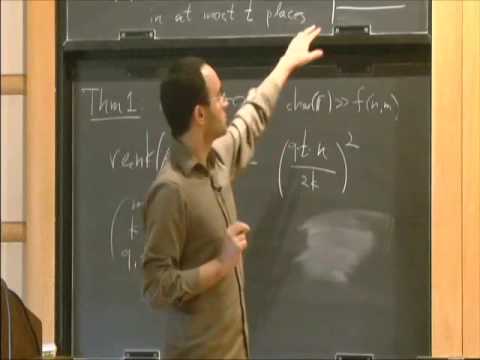Rank Bounds for Design Matrices with Applications to Combinatorial Geometry and Locally Correctable Codes
Presenter
October 19, 2010
Keywords:
- Computer Science and Discrete Mathematics (CSDM)
Abstract
A (q,k,t)-design matrix is an m x n matrix whose pattern of zeros/non-zeros satisfies the following design-like condition: each row has at most q non-zeros, each column has at least k non-zeros and the supports of every two columns intersect in at most t rows. We prove that for $m\geq n$, the rank of any $(q,k,t)$-design matrix over a field of characteristic zero (or sufficiently large finite characteristic) is at least $n - (qtn/2k)^2$ .Using this result we derive the following applications:(1) Impossibility results for 2-query LCCs over large fields: A 2-query locally correctable code (LCC) is an error correcting code in which every codeword coordinate can be recovered, probabilistically, by reading at most two other code positions. Such codes have numerous applications and constructions (with exponential encoding length) are known over finite fields of small characteristic. We show that infinite families of such linear 2-query LCCs DO NOT EXIST over fields of characteristic zero or large characteristic regardless of the encoding length.(2) Generalization of known results in combinatorial geometry: We prove a quantitative analog of the Sylvester-Gallai theorem: Let $v_1,...,v_m$ be a set of points in C^d such that for every i in [m] there exists at least delta*m values of j in [m] such that the line through $v_i,v_j$ contains a third point in the set. We show that the dimension of ${ v_1,...,v_m }$ is at most $O(1/delta^2)$. We also provide a quantitative variant and a three-color variant of the Motzkin-Rabin theorem (which is a colored version of the Sylvester-Gallai theorem).Joint work with Boaz Barak, Avi Wigderson and Amir Yehudayoff.
